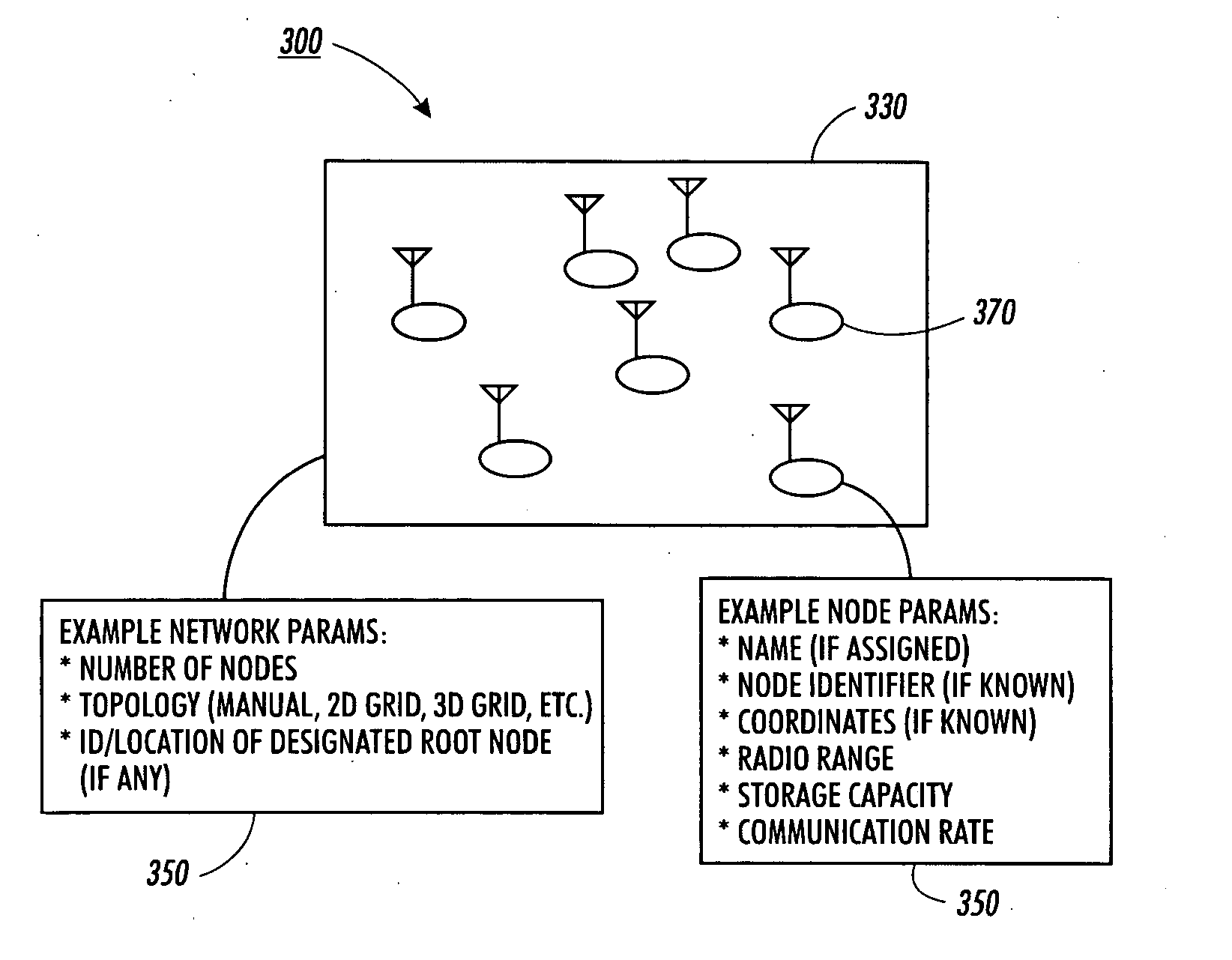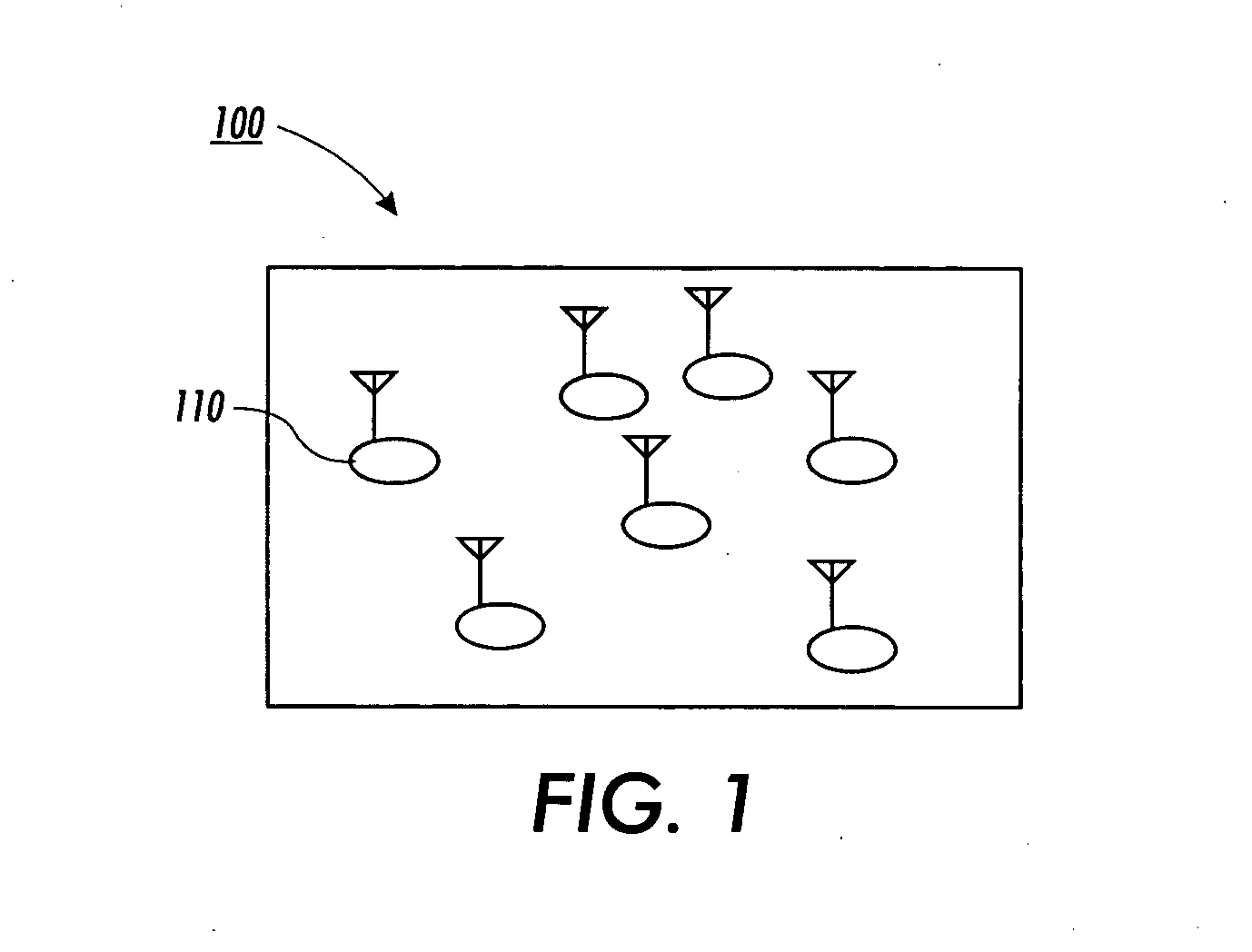Systems and methods for architecture independent programming and synthesis of network applications
a network application and architecture independent technology, applied in the field of computer networks, can solve the problems of increasing the cost of development, limiting the portability and extensibility of solutions,
- Summary
- Abstract
- Description
- Claims
- Application Information
AI Technical Summary
Problems solved by technology
Method used
Image
Examples
Embodiment Construction
[0020] An abstract task graph (ATaG) representation is defined that may be used to describe the behavior of a desired application in a manner independent of the architecture of a particular network on which the application is to be performed. The terms “network” and “network applications”, as used in this application, pertain generally to systems, such as sensor networks, where the physical location and time of origin of a data item in the network plays an important role in the processing applied to that data item. More generally, the systems and methods are relevant to “spatial computing” applications such as, for example, those encountered in wireless sensor networks, networks of traffic lights in a city, and the like. The common characteristic of such applications is that collaborative computation among spatially proximate computing nodes is meaningful at the application level.
[0021] The architecture of a spatial computing network generally include parameters that may vary over ...
PUM
 Login to View More
Login to View More Abstract
Description
Claims
Application Information
 Login to View More
Login to View More - R&D
- Intellectual Property
- Life Sciences
- Materials
- Tech Scout
- Unparalleled Data Quality
- Higher Quality Content
- 60% Fewer Hallucinations
Browse by: Latest US Patents, China's latest patents, Technical Efficacy Thesaurus, Application Domain, Technology Topic, Popular Technical Reports.
© 2025 PatSnap. All rights reserved.Legal|Privacy policy|Modern Slavery Act Transparency Statement|Sitemap|About US| Contact US: help@patsnap.com



